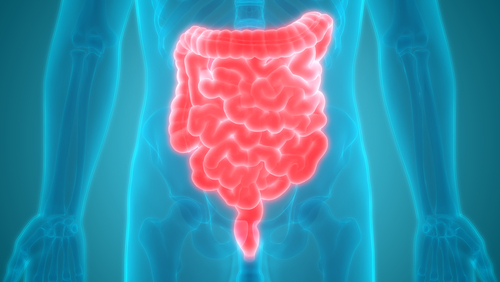Key Protein in Parkinson’s – Alpha-synuclein – Travels from Gut to Clump in Brain, Study Reports

Altered forms of the alpha-synuclein protein travel along the vagus nerve from the gut to the brain where they accumulate, according to a study in mice. It also suggests that blocking this transport could prevent the progression of Parkinson’s disease.
The work lends support to theories that Parkinson’s begins in the gastrointestinal tract.
“This is an exciting discovery for the field and presents a target for early intervention in the disease,” Ted Dawson, MD, PhD, one of the study’s senior authors, said in a press release.
“Transneuronal Propagation of Pathologic a-Synuclein from the Gut to the Brain Models Parkinson’s Disease” was published in the journal Neuron.
Parkinson’s is characterized by the buildup of alpha-synuclein in protein inclusions in the brain called Lewy bodies. Prior work in postmortem human brains has shown that misfolded alpha-synuclein accumulates in brain areas controlling the gut. This led researchers to hypothesize that Parkinson’s progression requires communication between the gut and the brain.
Aiming to test whether misfolded alpha-synuclein travels along the vagus nerve — the longest nerve in the autonomic nervous system that connects the stomach and small intestine to the brain — researchers at Johns Hopkins University School of Medicine injected 25 micrograms of synthetic misfolded alpha-synuclein fibrils into the muscle layers of the duodenum (the first part of the small intestine) and the pylorus (the opening from the stomach into the duodenum) of healthy mice.
Over the course of 10 months, the scientists then found that alpha-synuclein began to accumulate in the vagus nerve to subsequently spread throughout the brain, seen by the detection of the altered form of this protein there.
One of the brain areas with misfolded alpha-synuclein was the substantia nigra pars compacta (SNpC), where the scientists found a gradual loss of dopamine-producing nerve cells, as typically seen in people with Parkinson’s. The levels of dopamine and its by-products were also lower in the striatum, a brain area connected to the SNpC and a key component of the motor system.
Surgically cutting the vagus nerve before injecting mice with misfolded alpha-synuclein led to none of the signs observed in animals with an intact vagus nerve, namely alpha-synuclein transport, loss of dopaminergic neurons, and lower dopamine levels.
Mice genetically engineered to lack the alpha-synuclein protein also showed no evidence of transmission to the brain after being injected with the protein’s misfolded form.
Subsequent experiments assessed whether transmission of pathological (disease-causing) forms of alpha-synuclein from the the gut to the brain caused behavioral changes.
Seven months after modified alpha-synuclein injections, the animals’ ability to build nests was analyzed as a way to assess their motor skills. Mice injected with misfolded alpha-synuclein that had an intact vagus nerve had lower scores than those with cut nerves: their nests were smaller and messier. These animals also used less than half a gram of nesting material, in contrast to the 2.5 grams used by the animals with severed nerves.
These mice also had higher anxiety levels than those with a damaged vagus nerve or genetically modified to lack alpha-synuclein, as observed in a test of how long the animals would spend exploring a large open box.
Other tests indicated that injecting modified alpha-synuclein and having intact nerves led to motor dysfunction, reduced grip strength, impaired learning, and caused olfactory problems and depression-like symptoms.
“Our results support the theory that [Parkinson’s] could begin in the gastrointestinal tract and spread through the vagus nerve to the brain,” the researchers wrote.
“These findings provide further proof of the gut’s role in Parkinson’s disease, and give us a model to study the disease’s progression from the start,” Dawson, who also the director of the Johns Hopkins Institute for Cell Engineering, added.
The team is now planning to study which parts of the vagus nerve are key for the travel of the misfolded protein, as a way to find how to stop this process.






